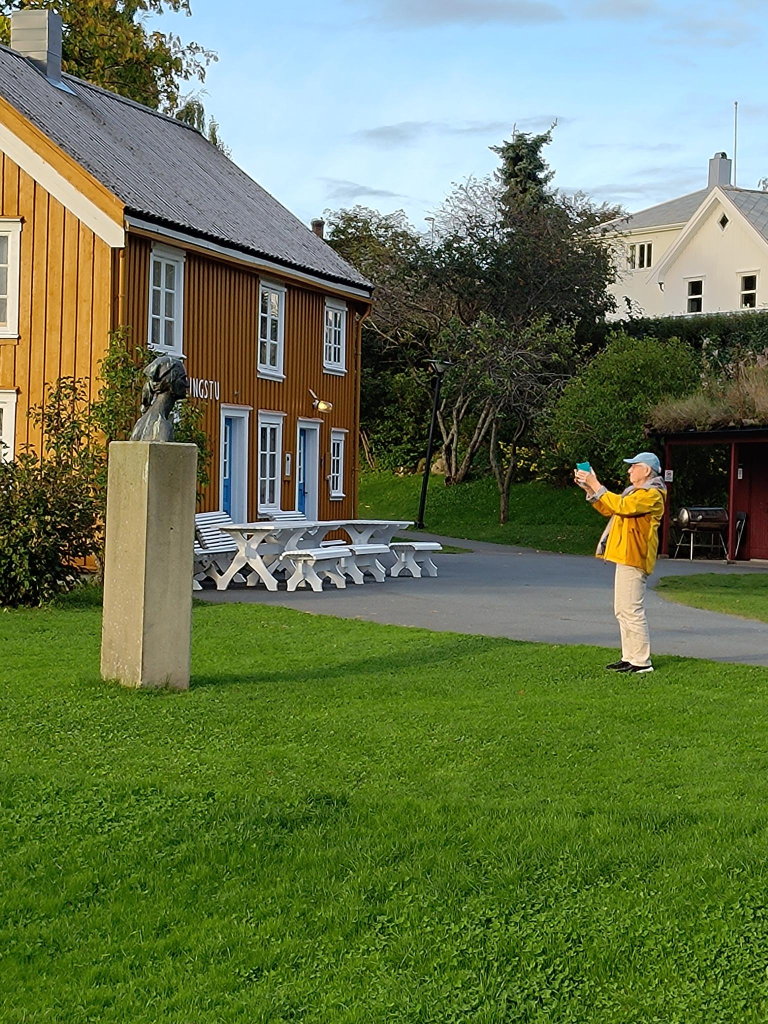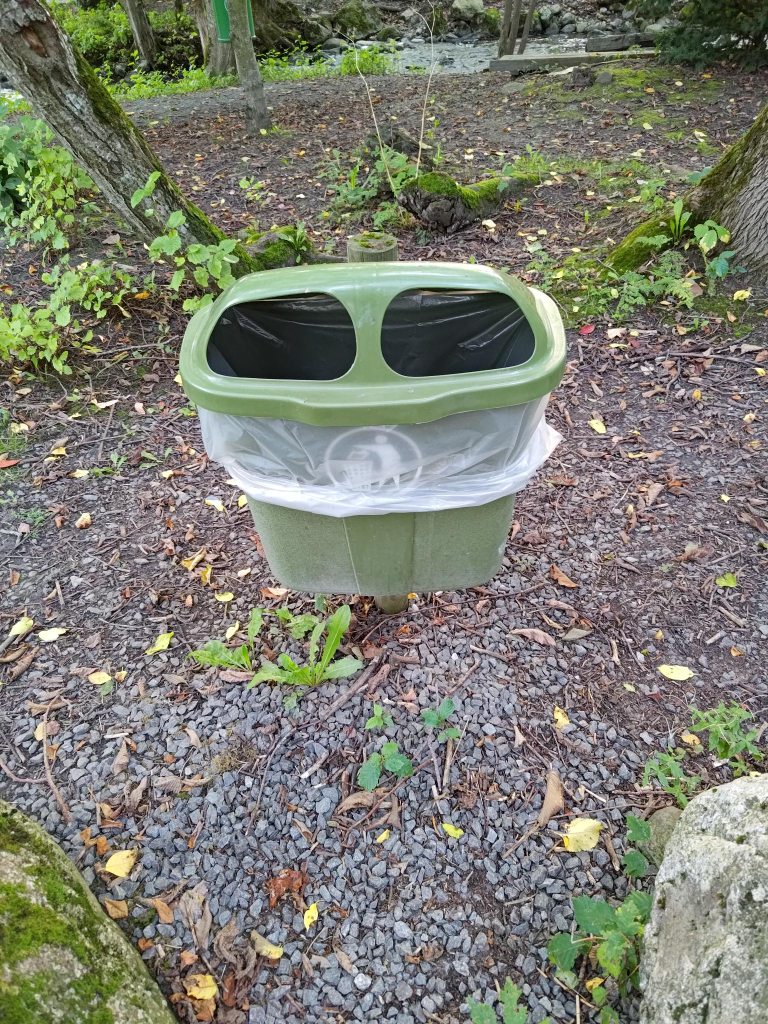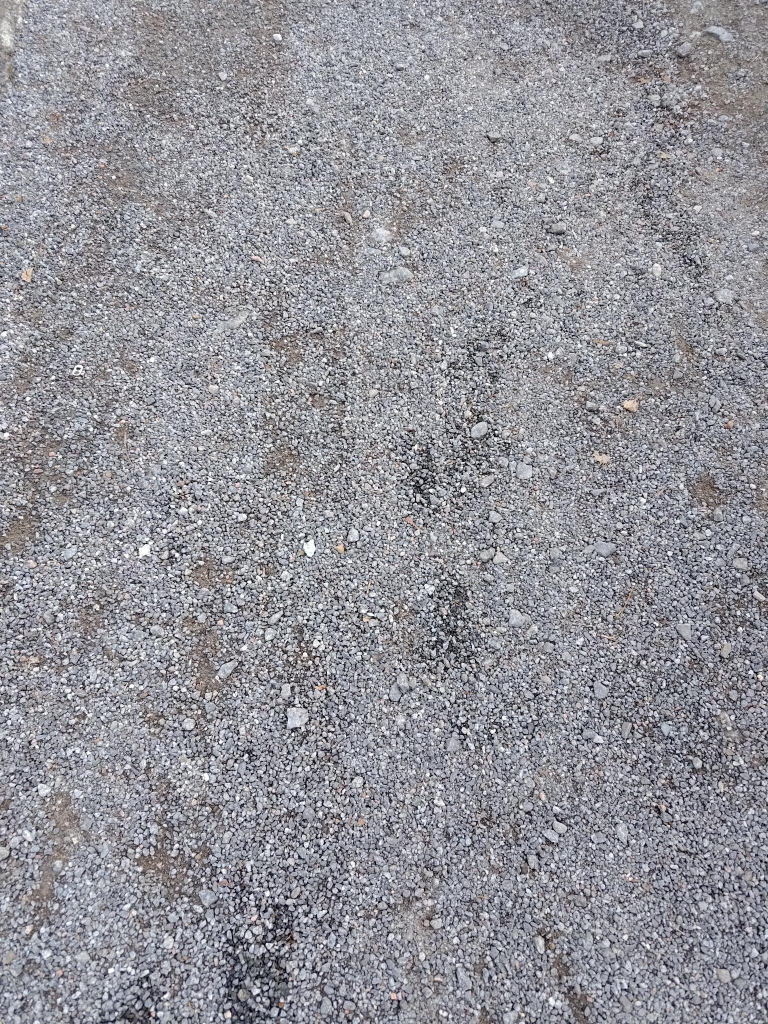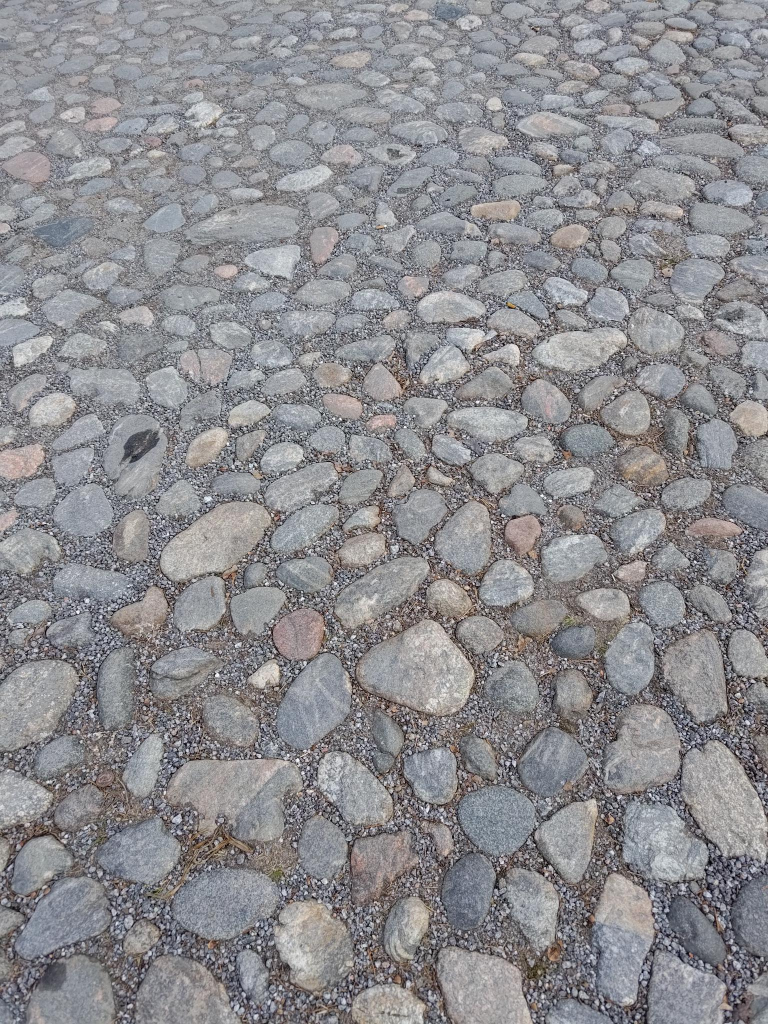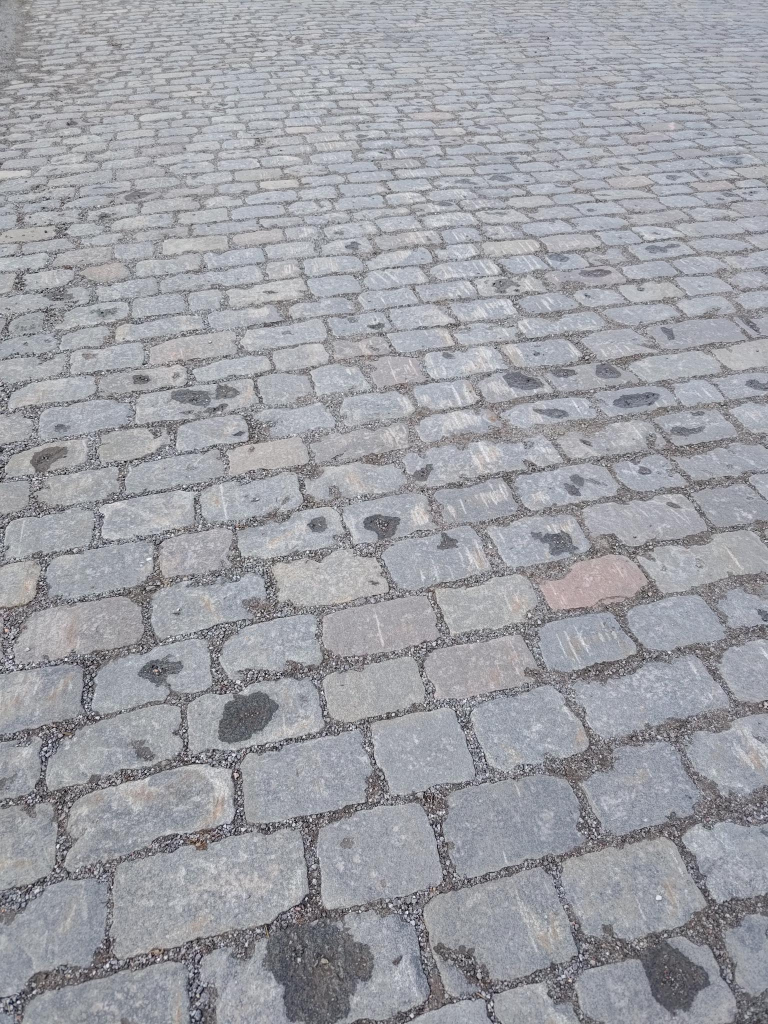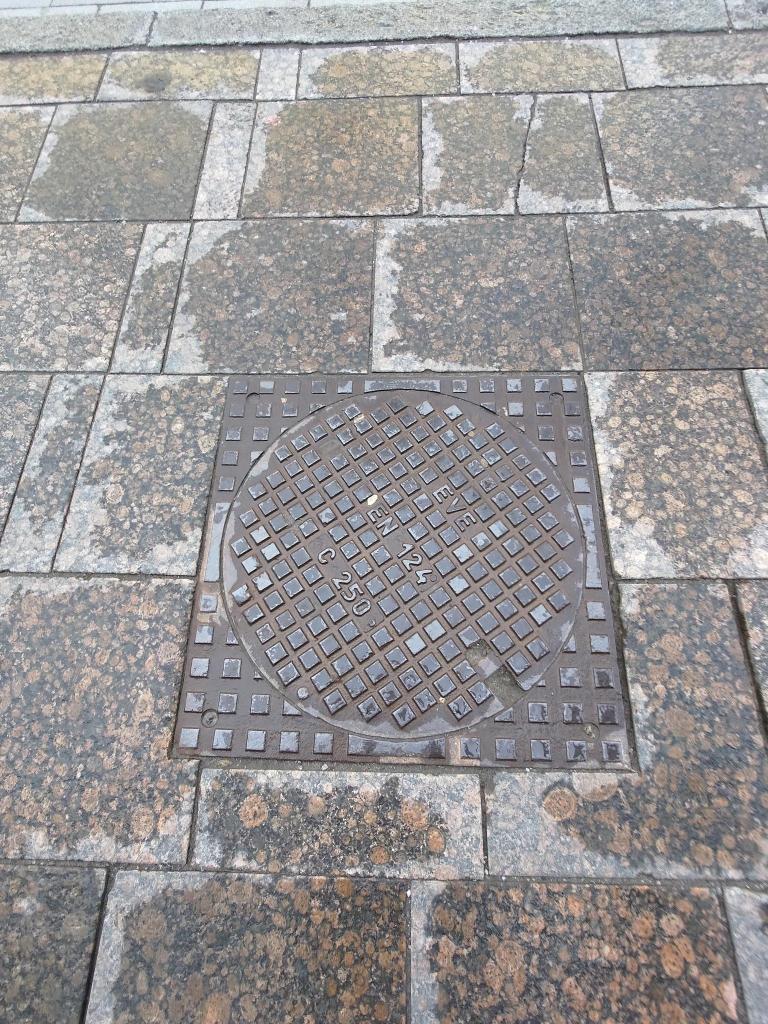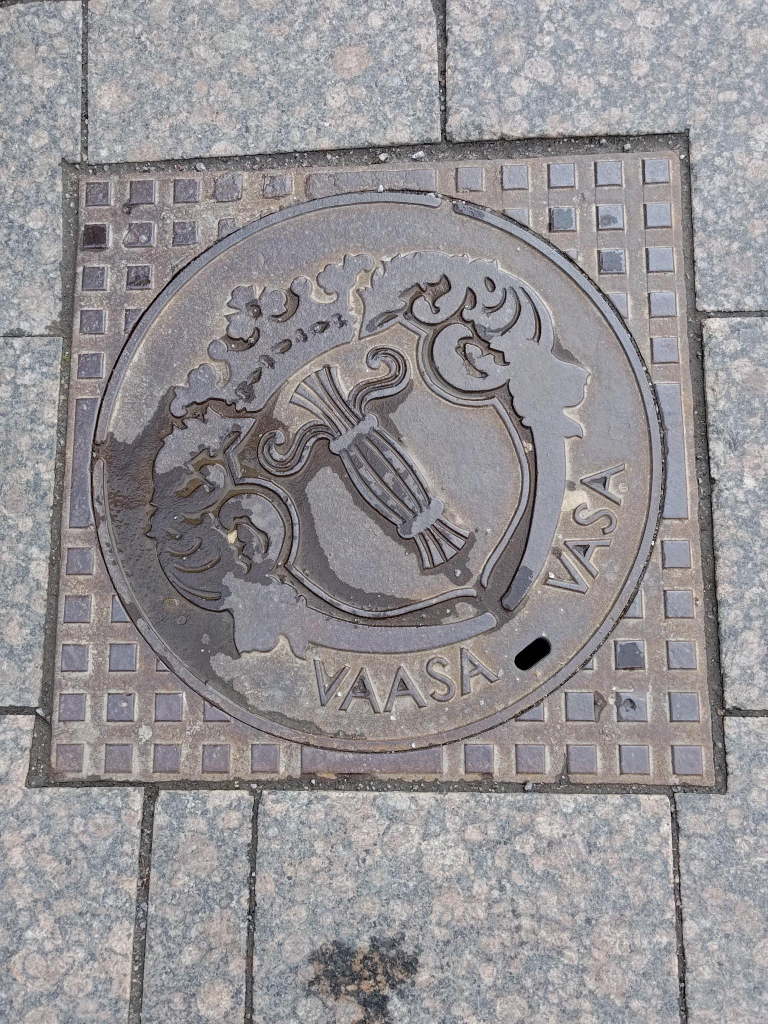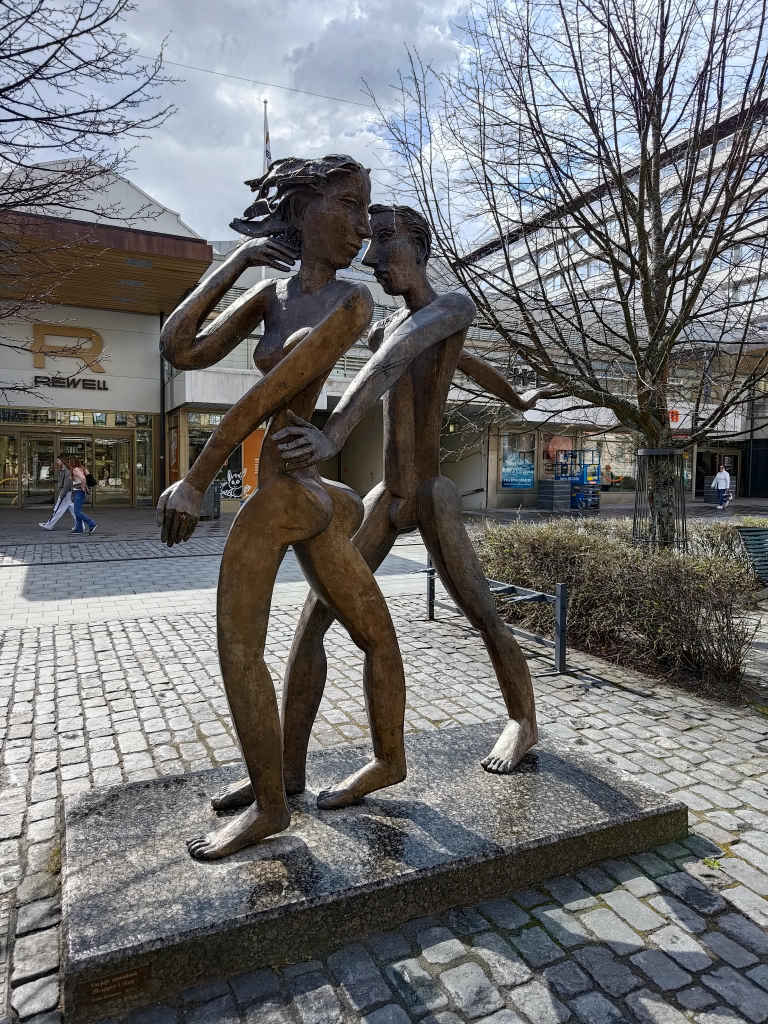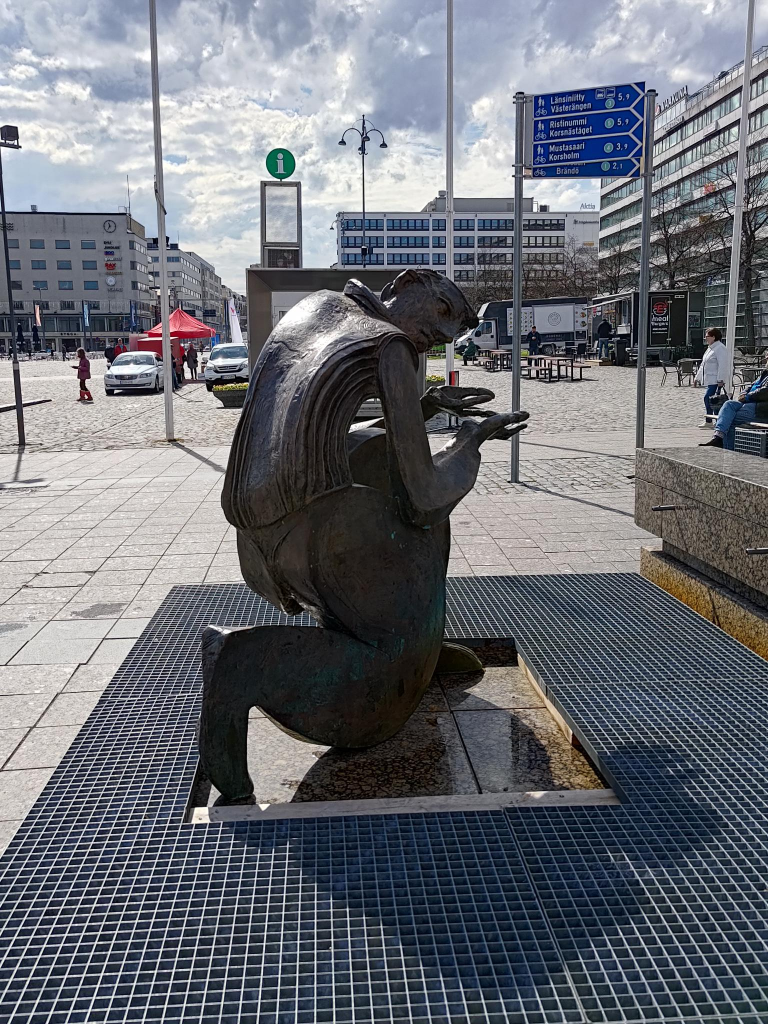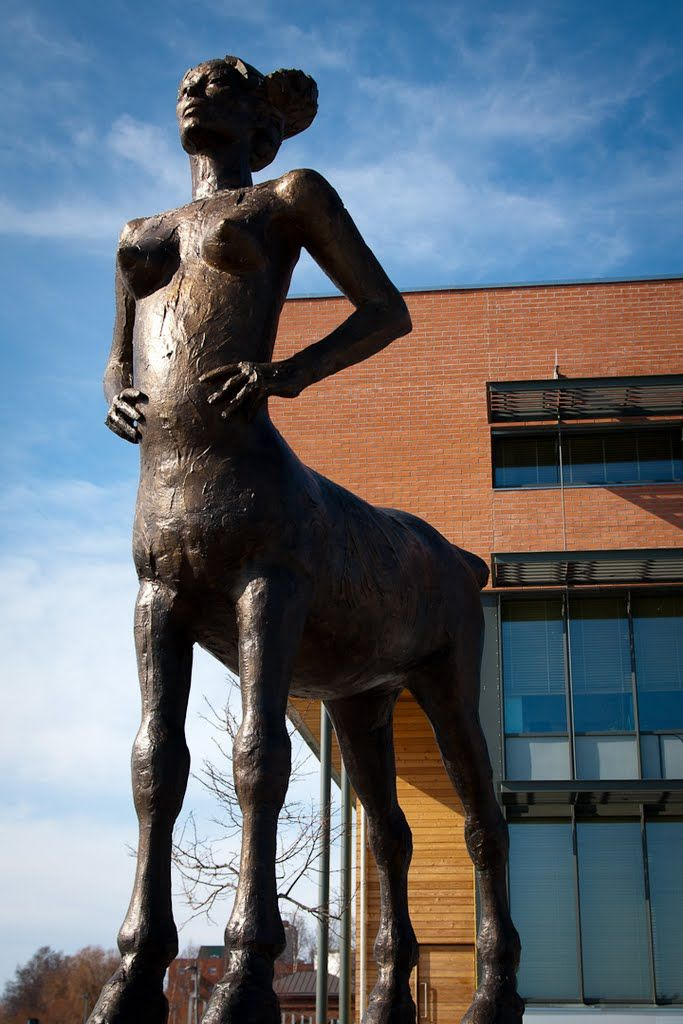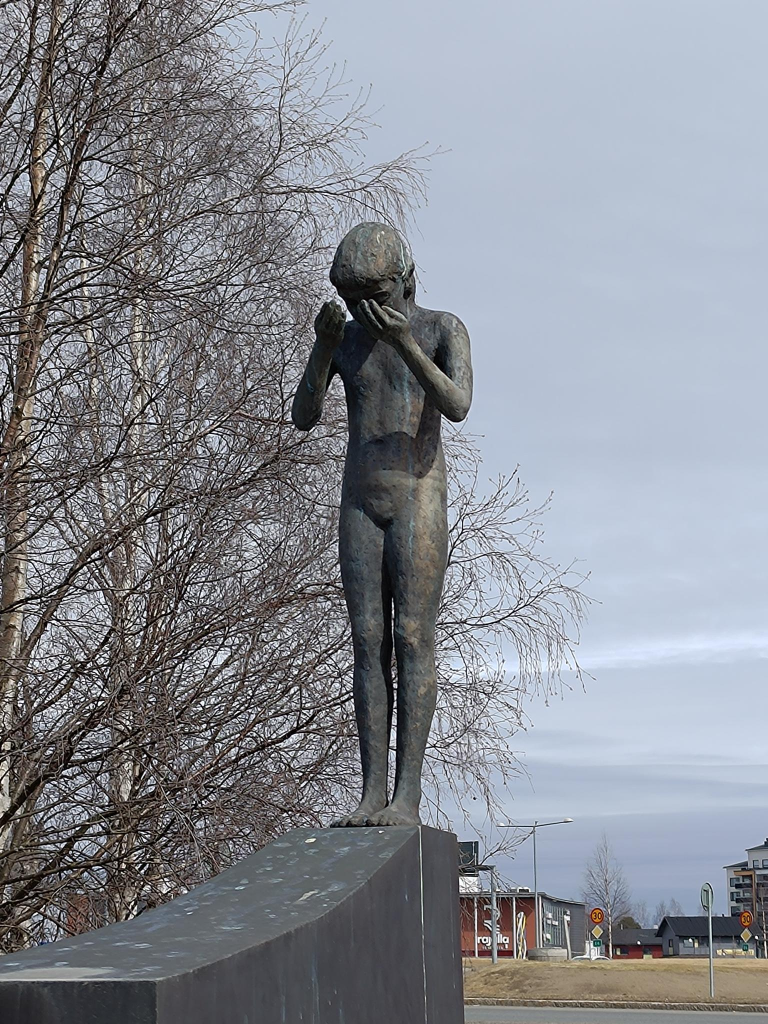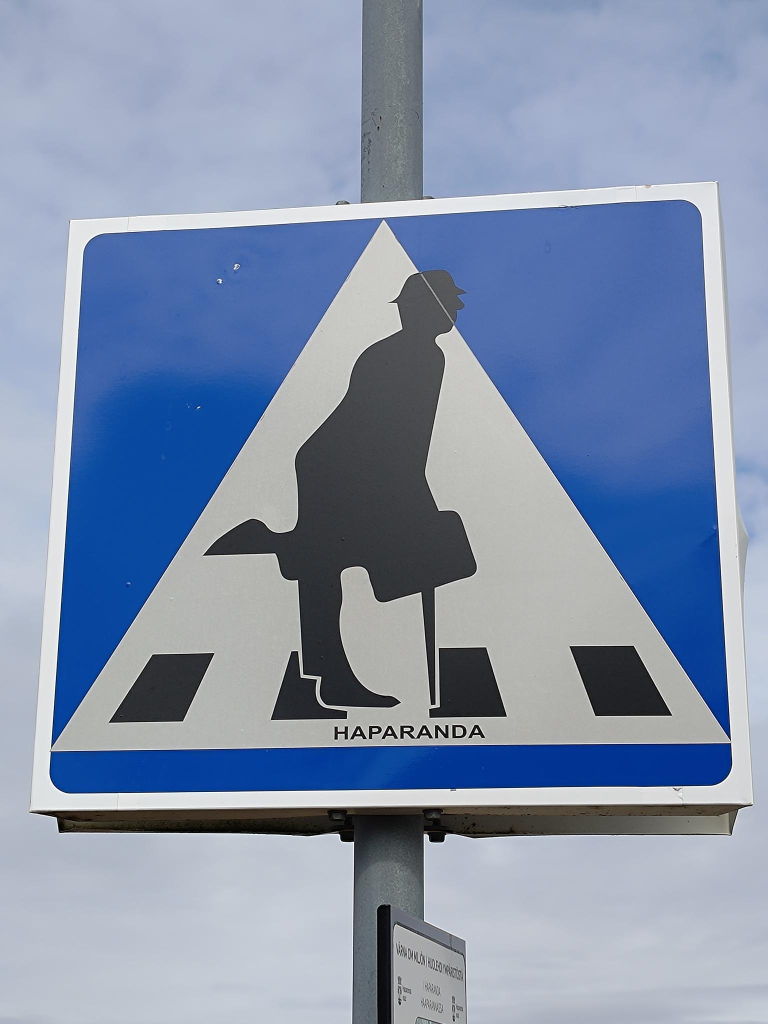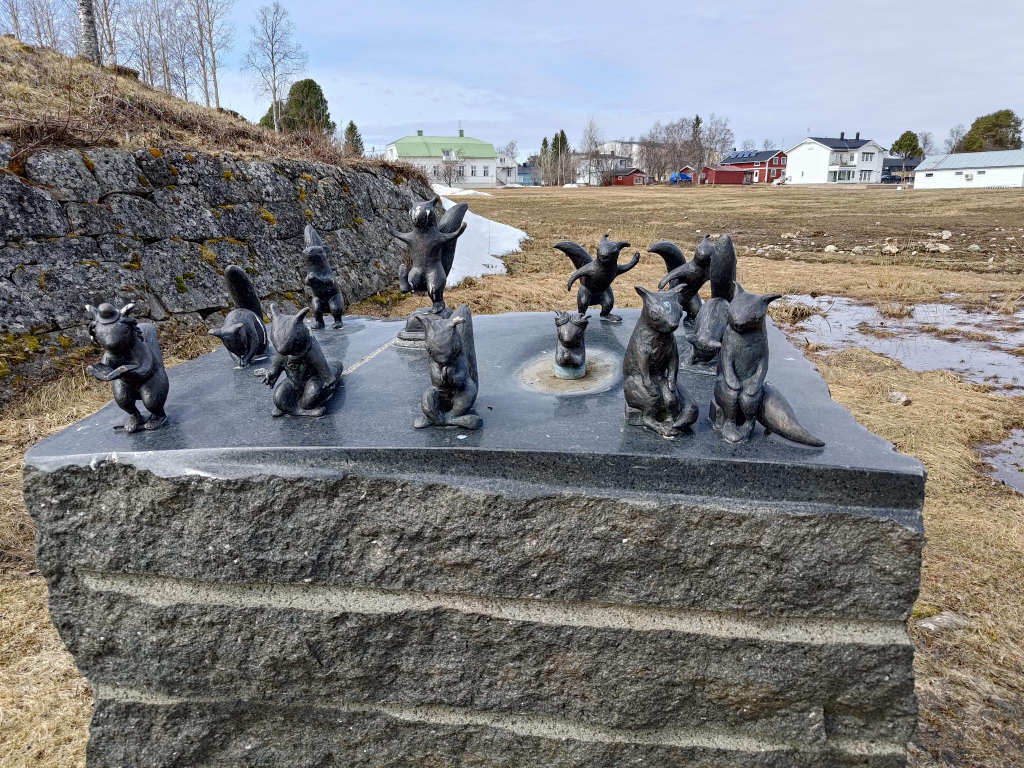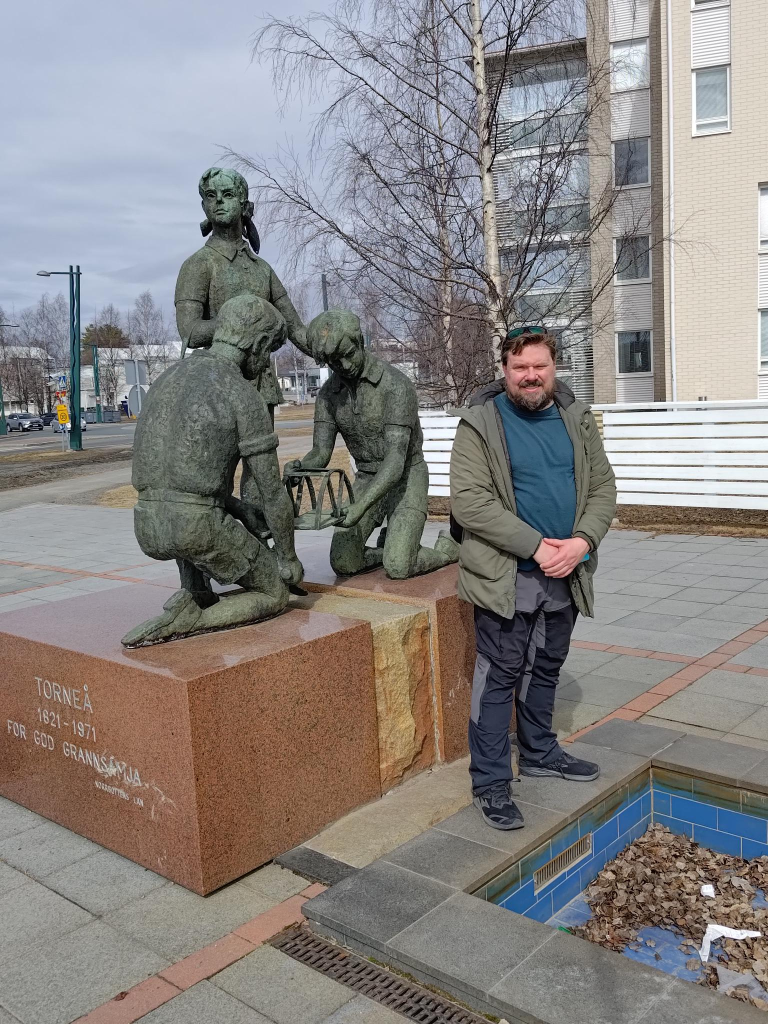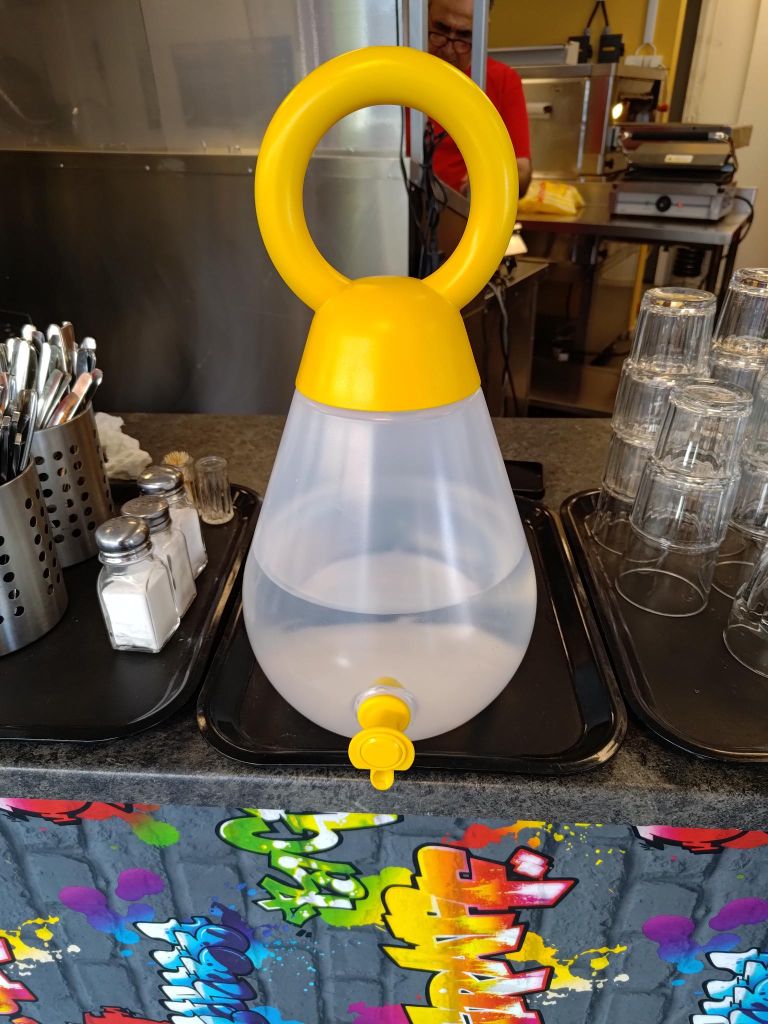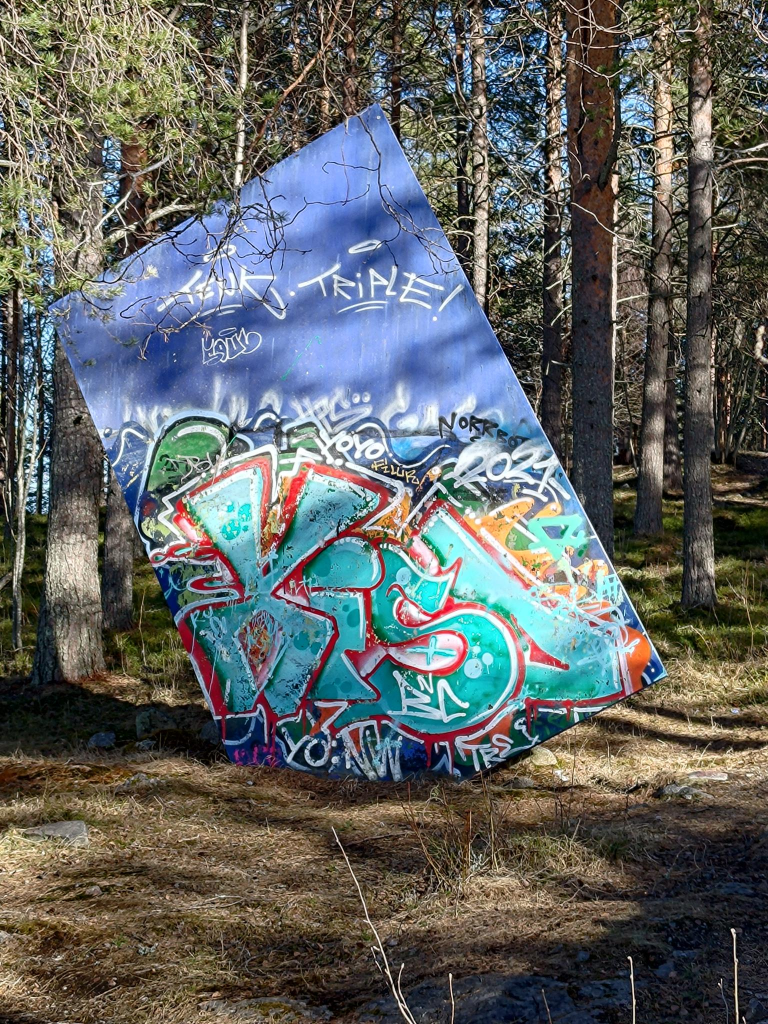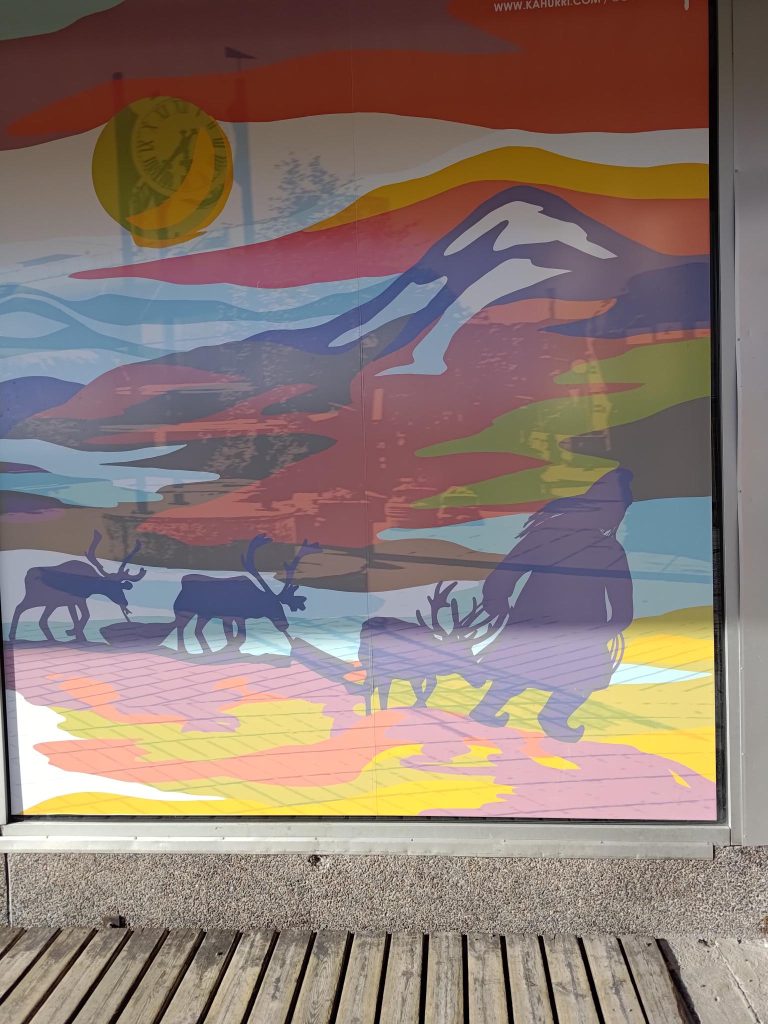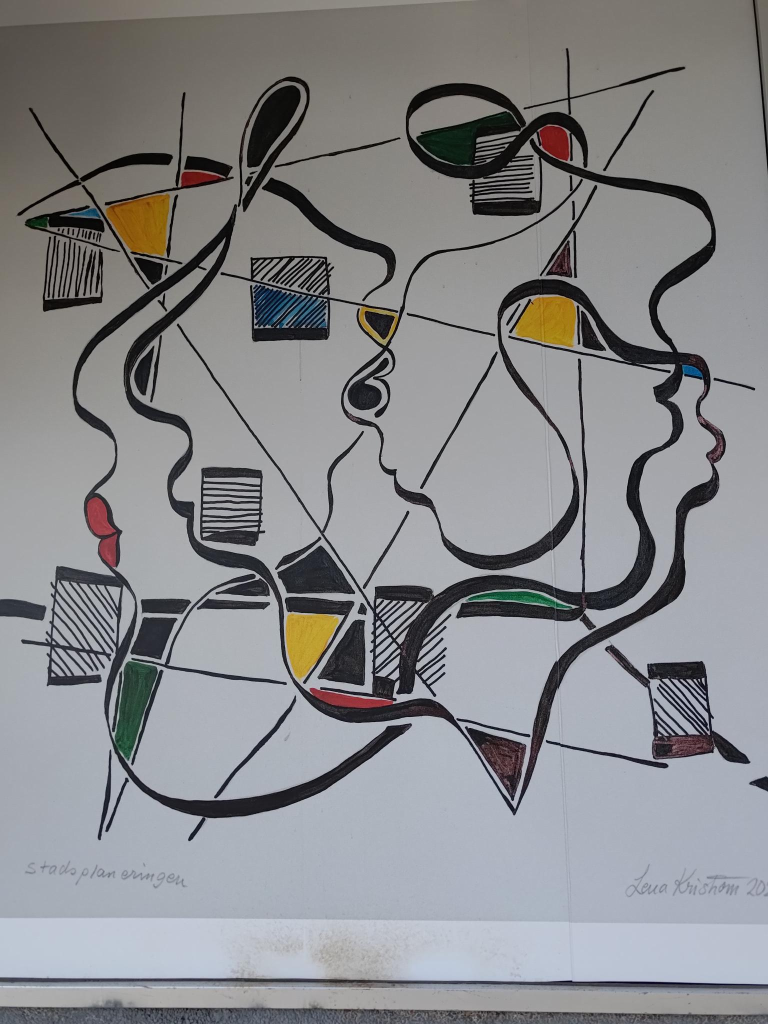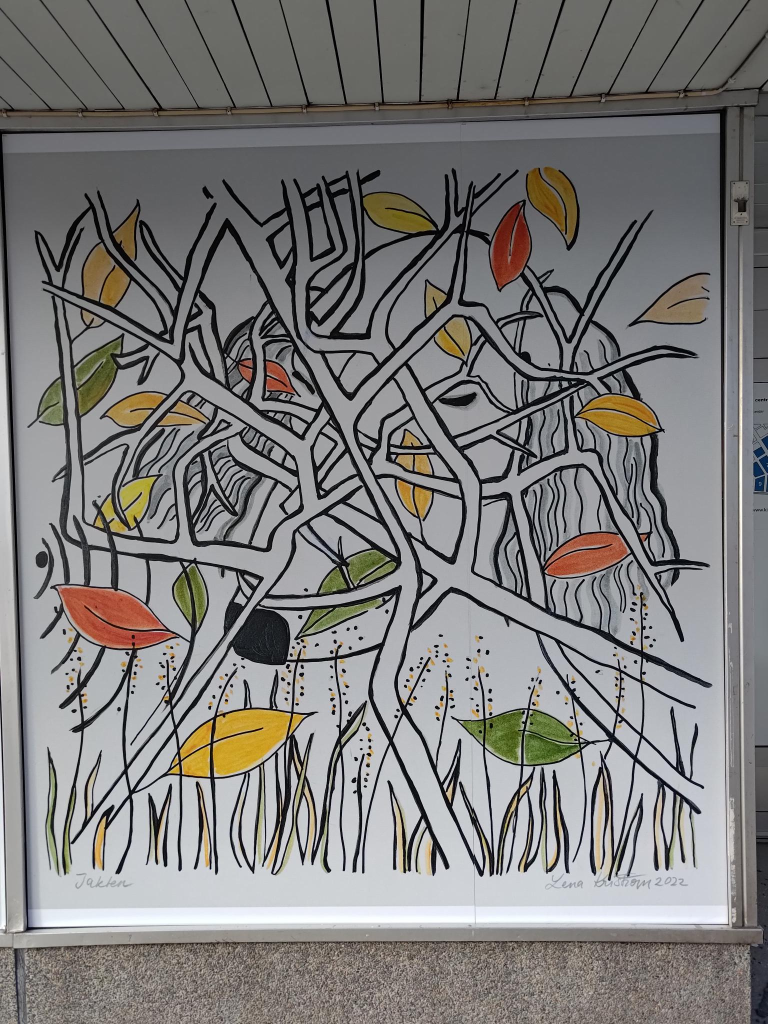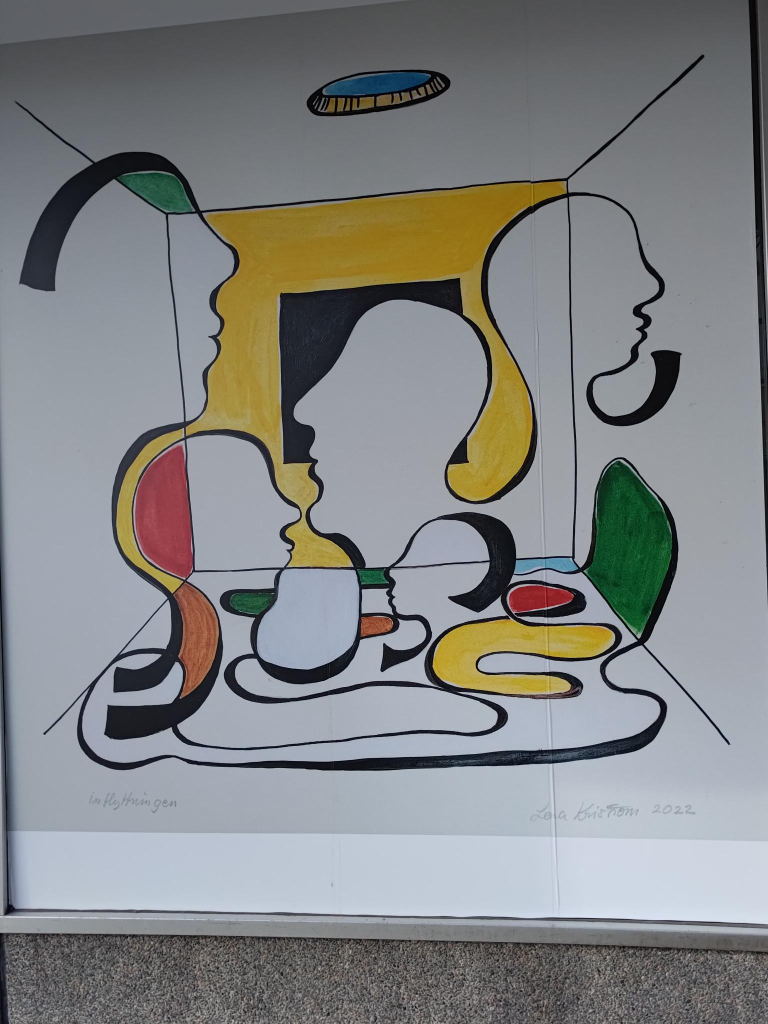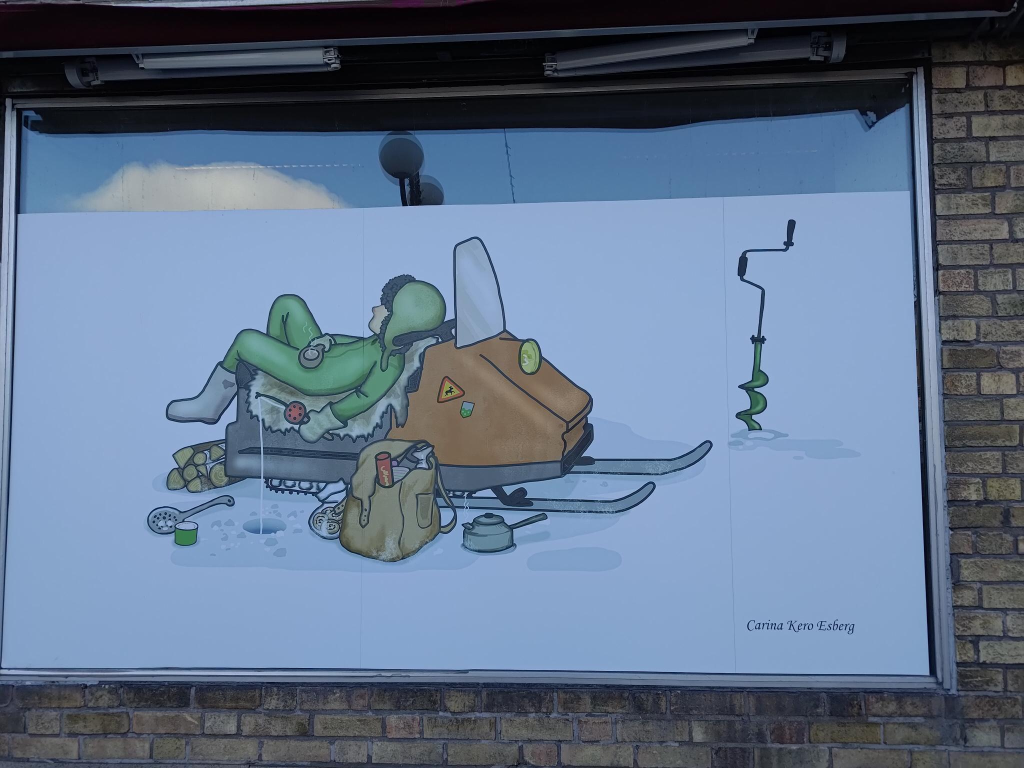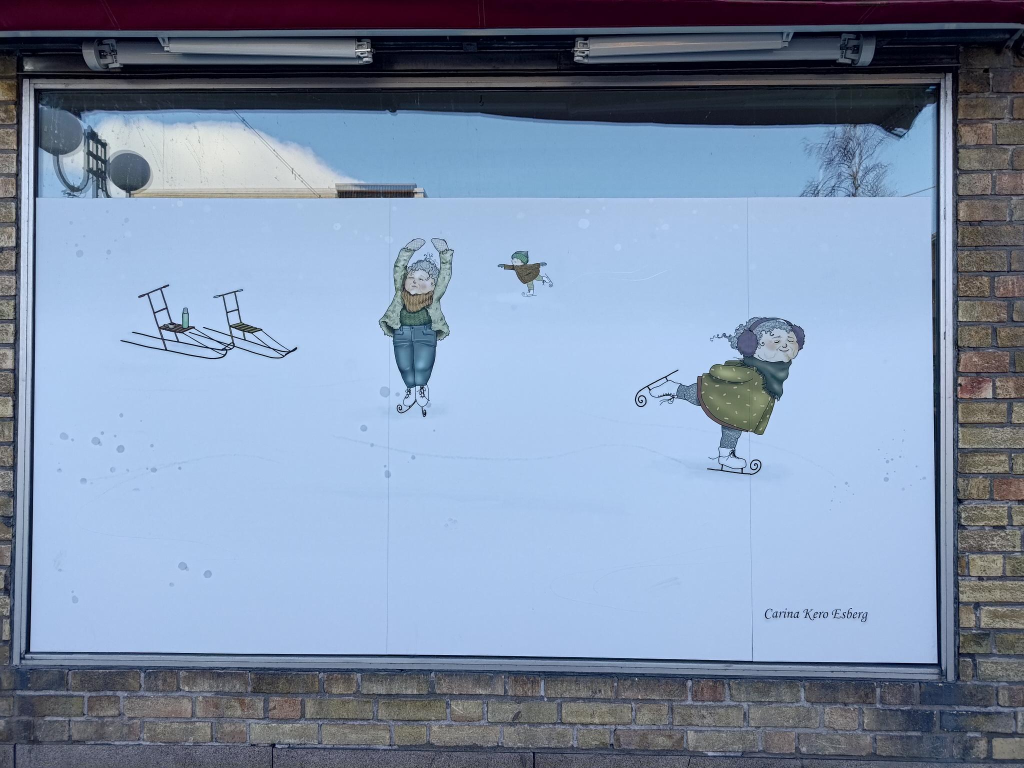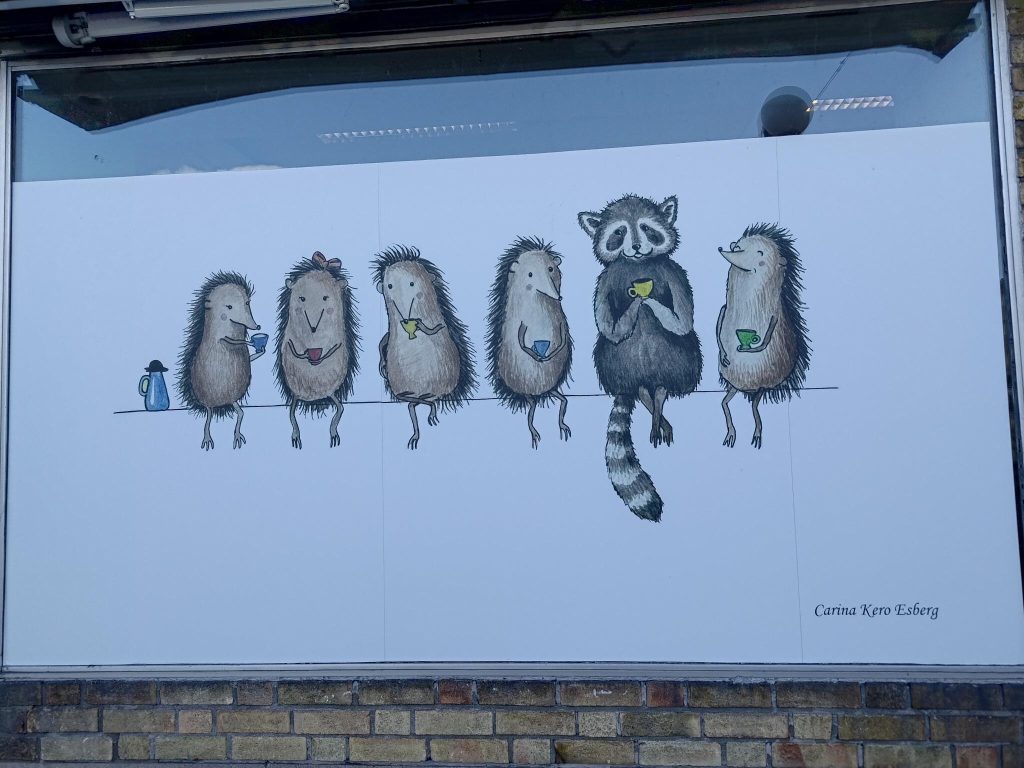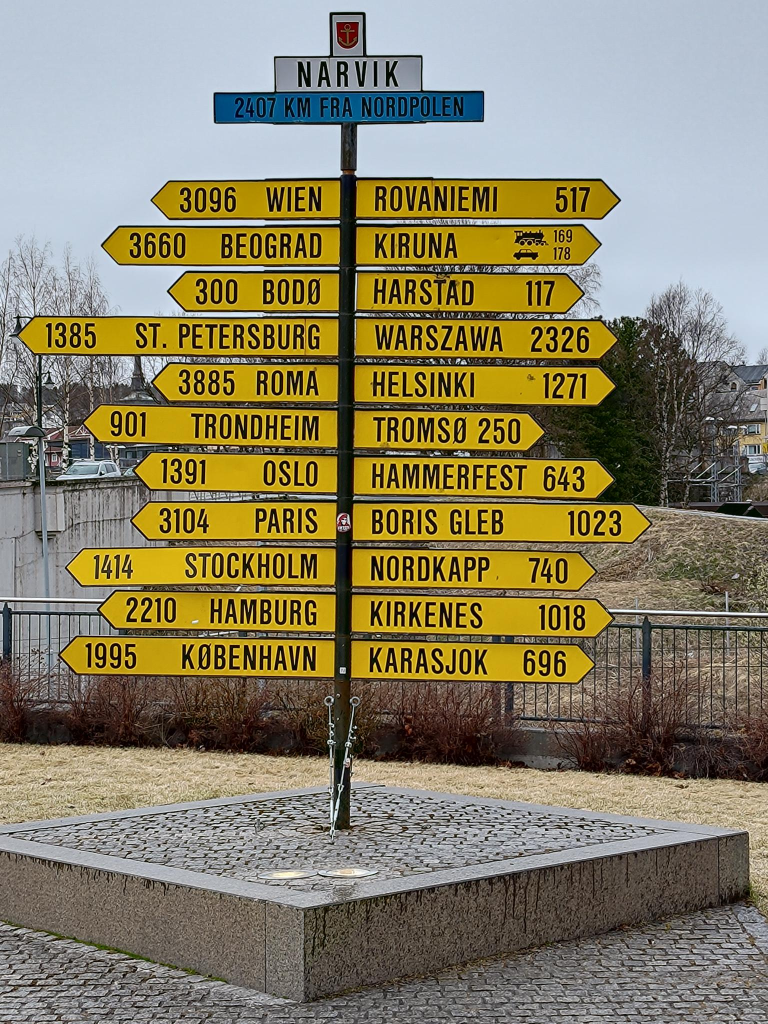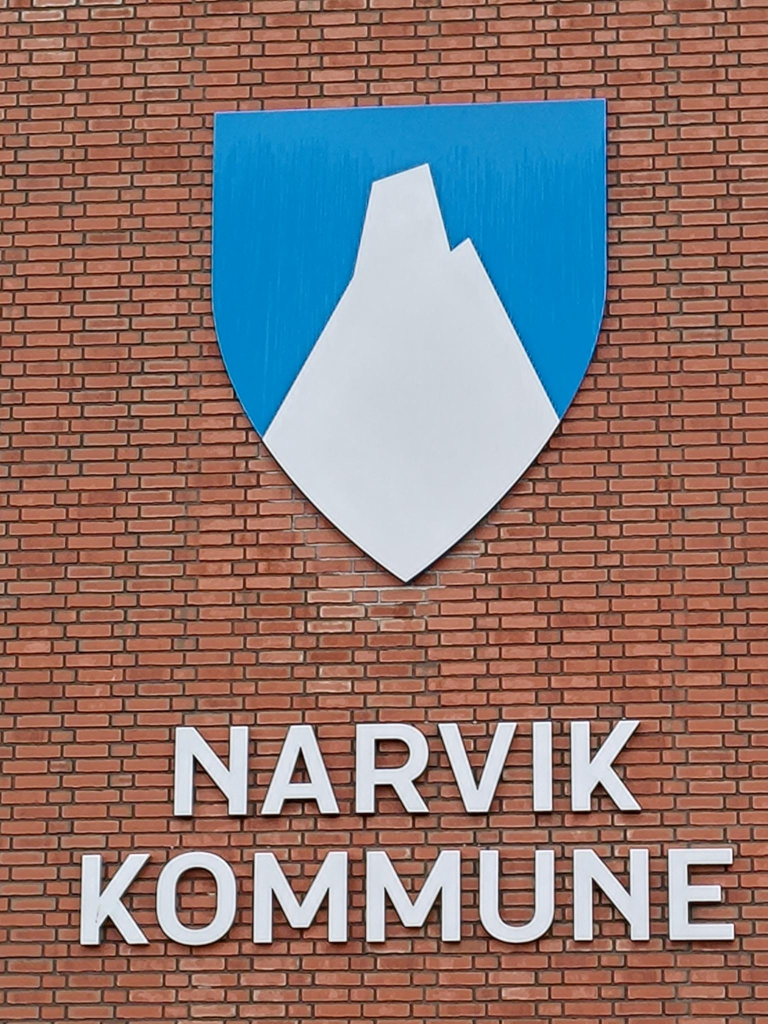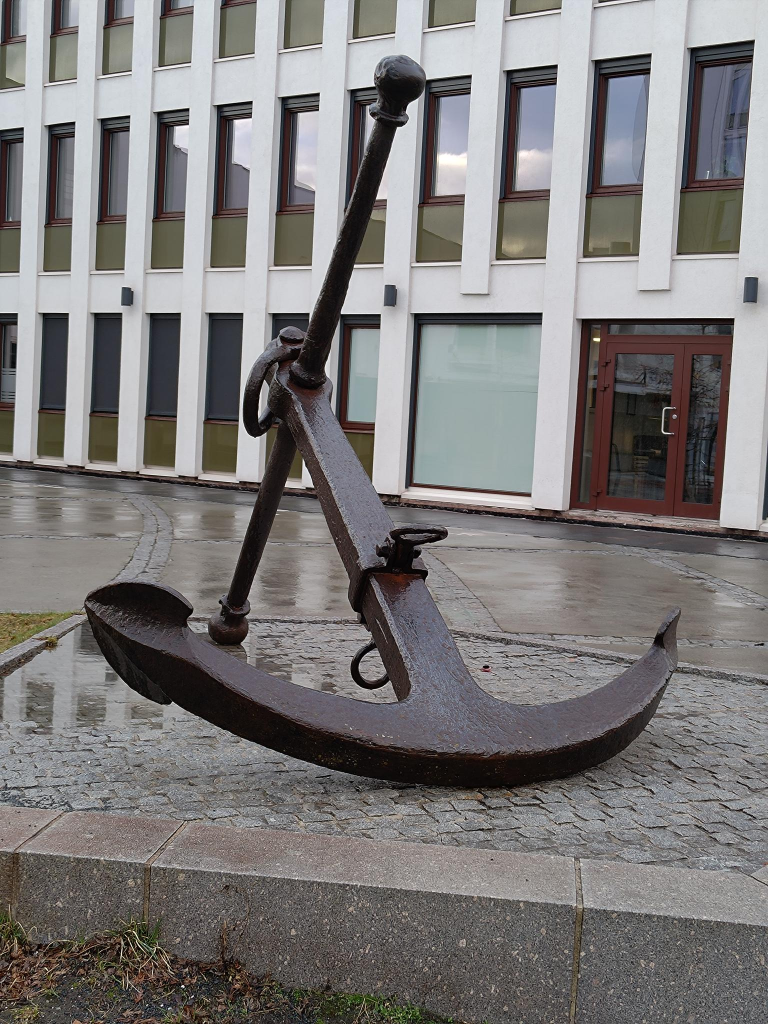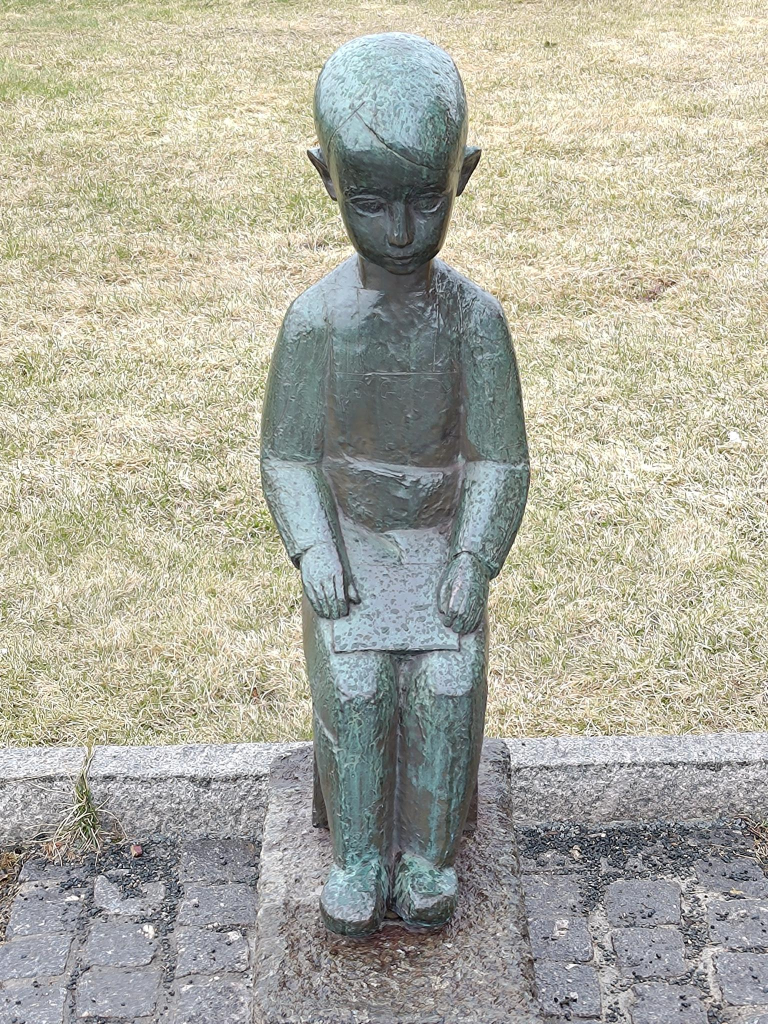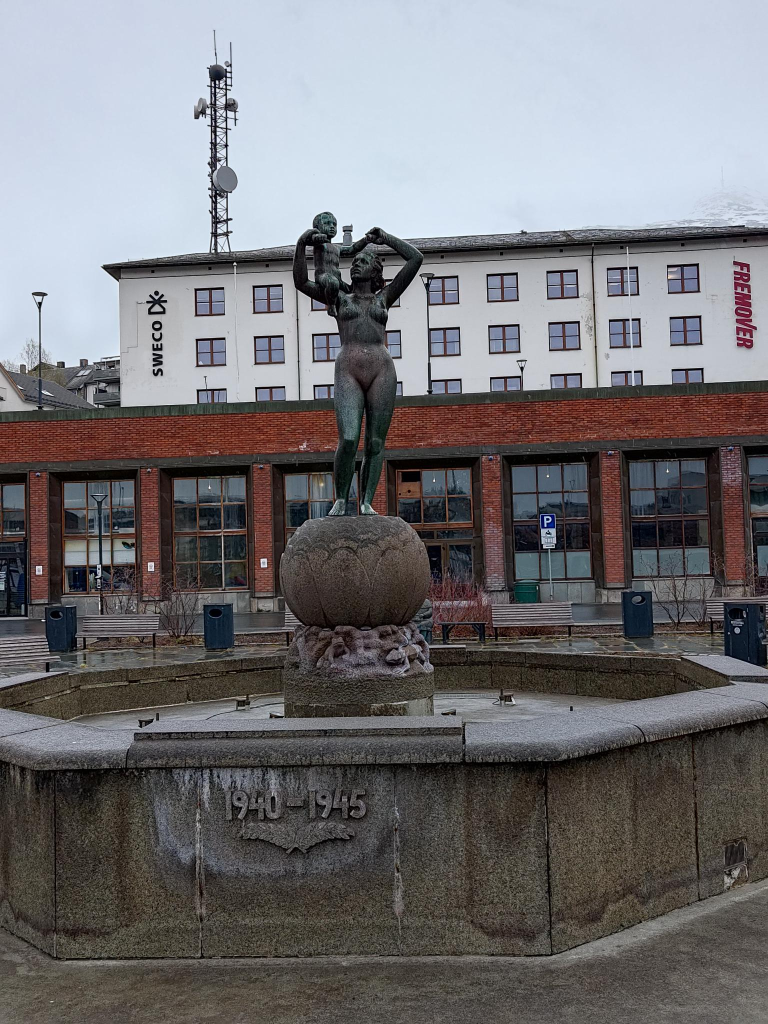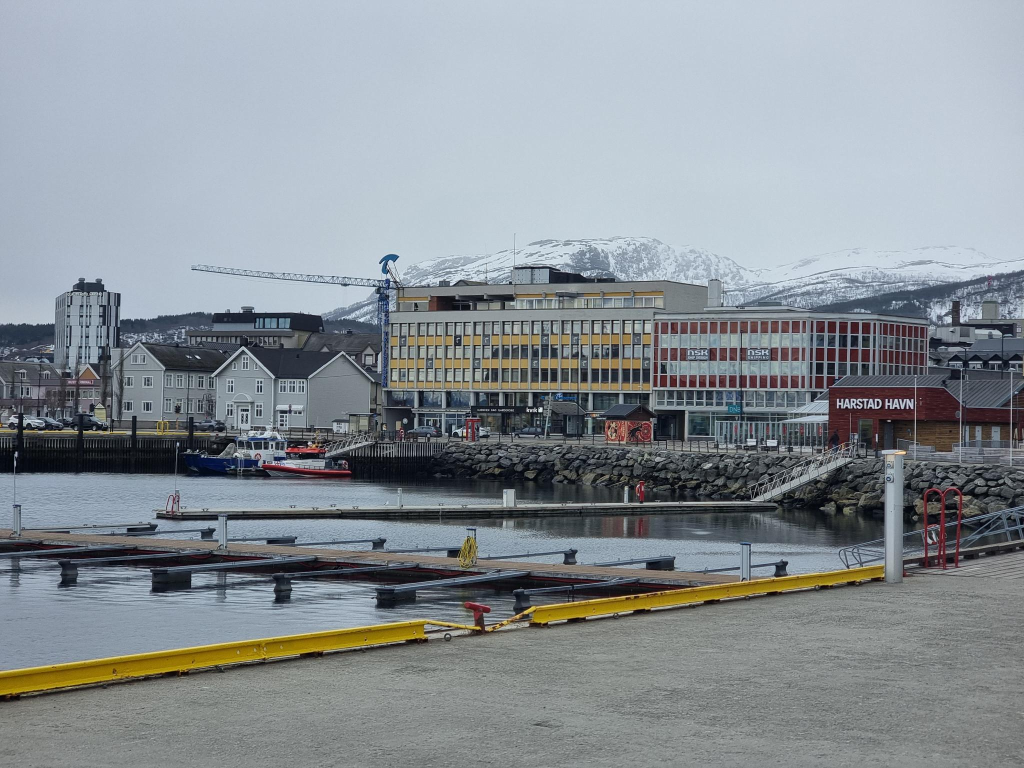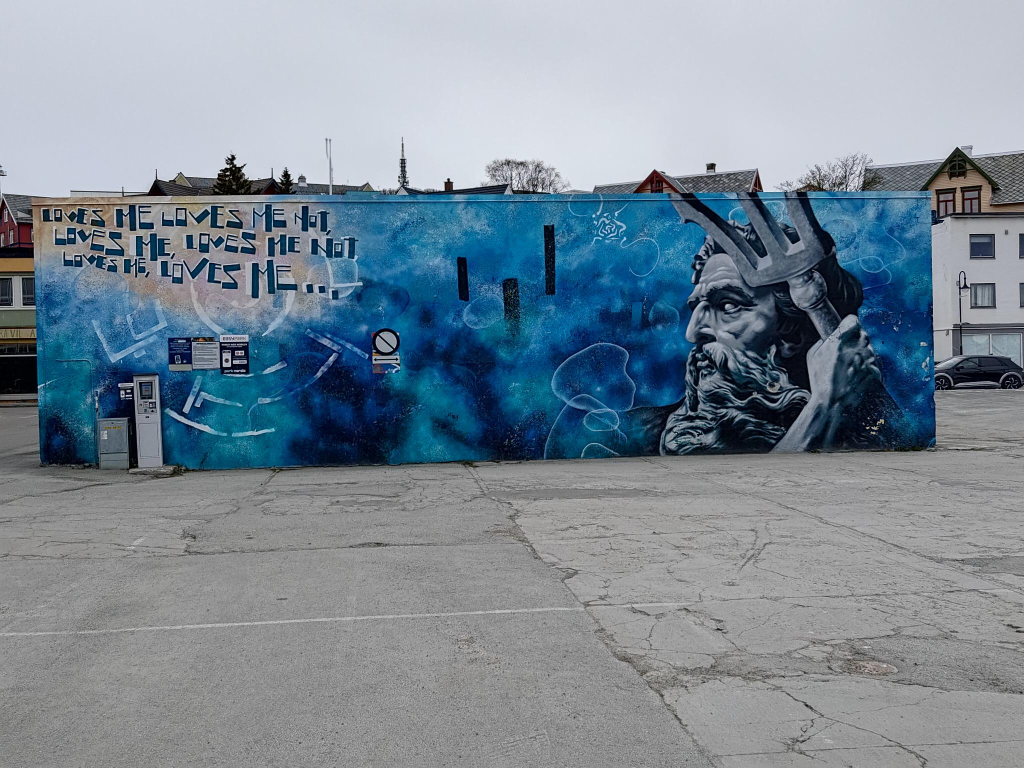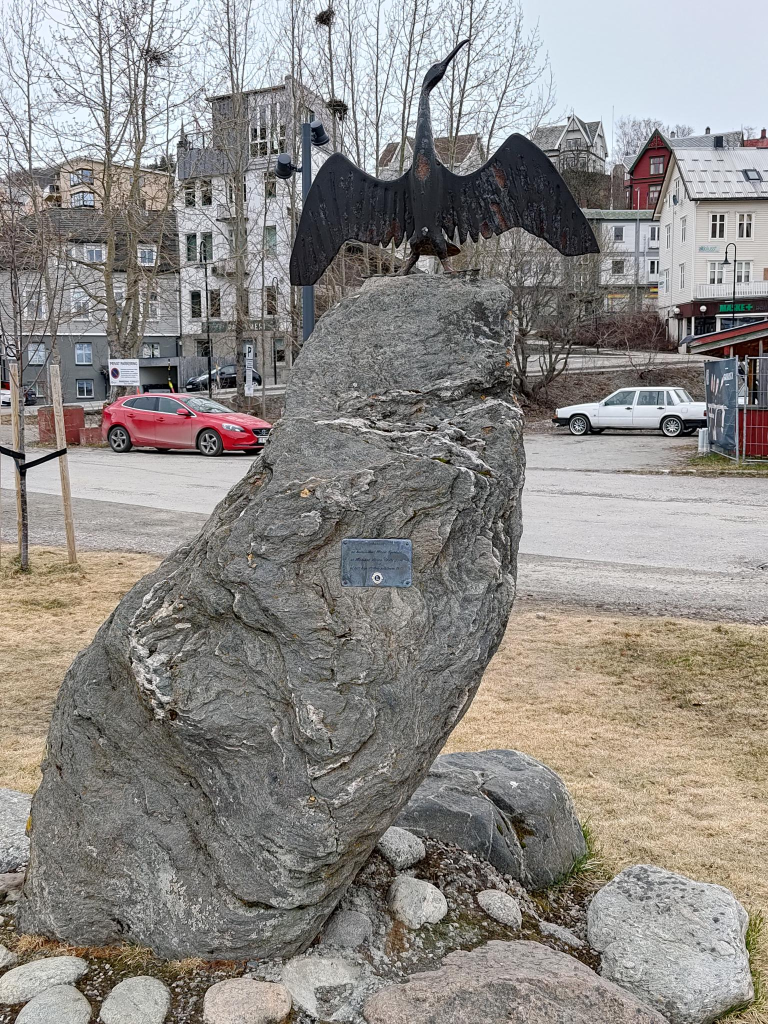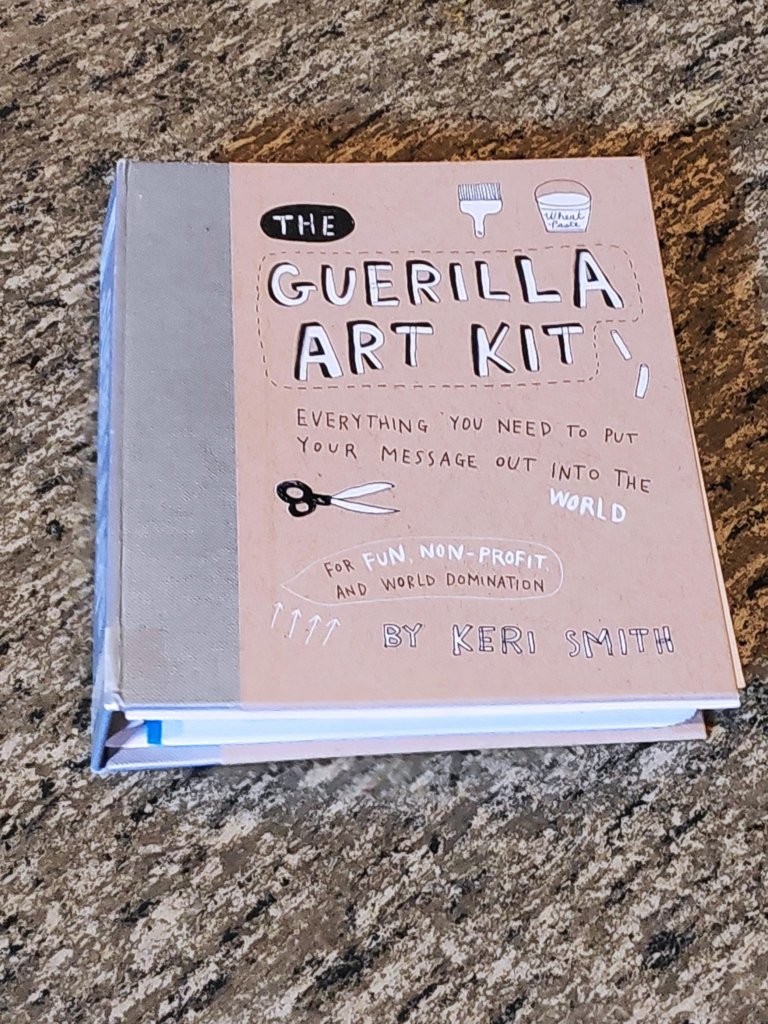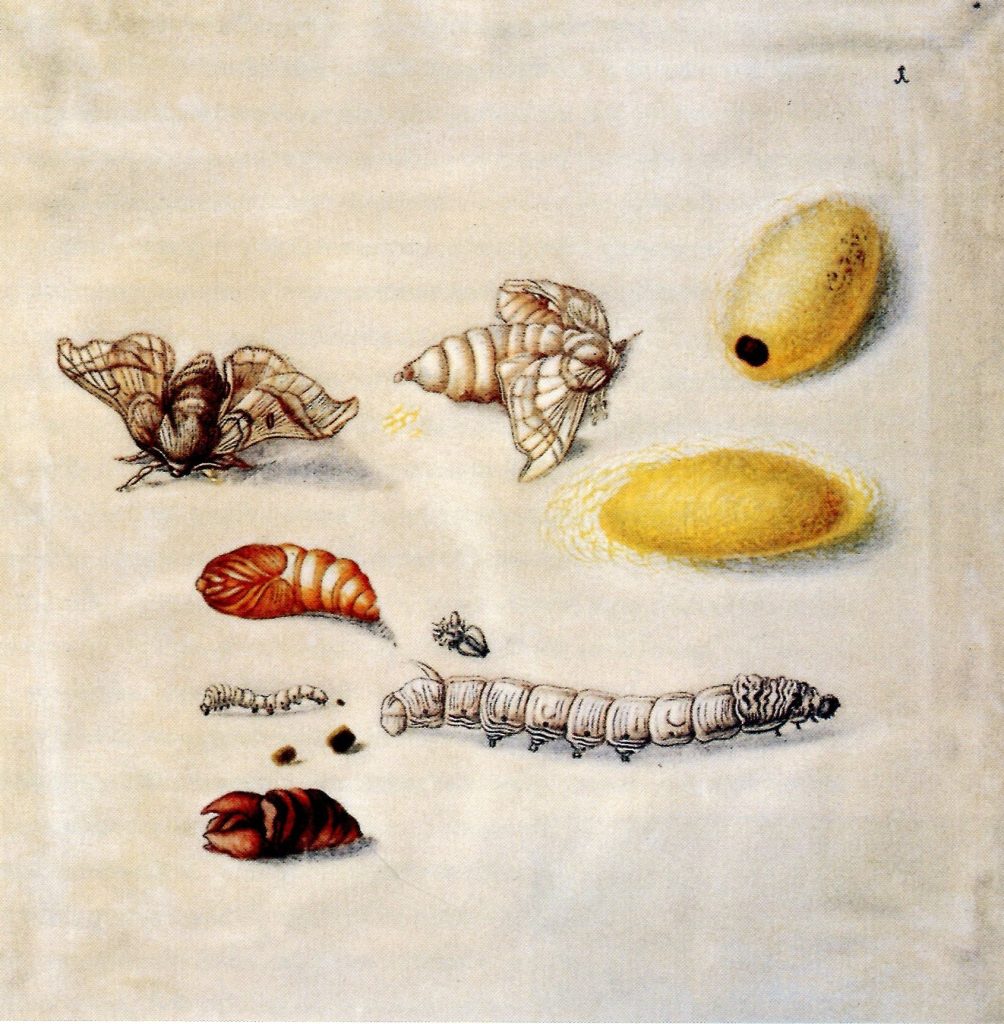Sometimes my competitive spirit shows itself. Such was the case on Friday, 2024-09-20. Trish suggested that we go for a walk, then do our weekly grocery shopping. For once, I managed to suggest a place to walk that was acceptable to her: the sculpture trail in Straumen, mostly featuring the works of Nils Aas (1933 – 2004). Muustrøparken = the sculpture park, is named after Lorents D. Muus (1809–87). As Norwegians euphemistically say, Muus wore many different hats throughout his life. He was a merchant, banker, post office official and mayor.
On arrival, Trish began taking photos that told me she had decided to write a weblog post about it. When she admitted to me that she had taken a photo of the map in the park, I knew how that post would appear. Yes, it is amazing what one can imagine after knowing someone for just fifty years. That map would be at the top, followed by up to 20 photos of the artwork. Not so many words because, as everyone knows, each photo eliminates the need for 1 000 words. The works in the Nils Aas gallery and workshop would not be included, but some of the park environment (including buildings and the creek, natives call Granelva = the Gran river) would be.
… and so we return to that competitive spirit. Most of the photographs I took were found objects in the park. Some even had sculptural shapes.
Back at Cliff Cottage, I had begun to assemble these into a weblog post of my own. Then I thought it would be a good idea to check my emails, yet again. A column alert from Gloria, two replies from Art, then disaster …
Trish had been using Chat on G-mail to communicate with her sister, Aileen. A message came in: The Red Bridge in Kamloops has burnt down. (timestamp 20:42). I know the bridge well, since my childhood. In the summer there were always children diving off it. On Signal, I posted a photo of it in happier days (timestamp 20:45). This was followed by a photo sent by Trish of its smoldering remains (timestamp 20:47). The red bridge exists no more. There was a fire on 2024-09-17 that was put out. Then on 2024-09-19 a different fire roared to life. Arson is suspected.


… and so unexpected events deflect the focus of one’s life. The bridge was built in 1936, so anyone remembering that location before the bridge, will probably have to be 93 or older to have it persist in their memory. Yes, there were two other bridges at the same location. The first from 1887, was flood damaged in 1909, and replaced in 1912. That second bridge was destroyed by fire caused by a spark from a passing steamer in 1934.
There was one photo I did not take in the park. I thought of taking it, but didn’t because I knew it would still be there the next time I visited. With the bridge fire in Kamloops, there is some urgency to take it now. I know where this photo will be used: Shrinking the Garage, a weblog post currently scheduled for publication 2025-10-29. It is more than a year away, and so I have time. One always has time, until one doesn’t.
